Strengthen and tone with this TRX lunge workout that takes leg day to the next level!
If you’re unfamiliar with TRX straps, the acronym stands for Total Body Resistance Exercise. Translation? You can train your entire body with just these straps and use your bodyweight as the resistance in this TRX lunge workout. No expensive gym equipment required!
These TRX lunge variations will not only intensify your leg exercises, but also work your core, arms and shoulders. You can perform them as a circuit like in the TRX lunge workout below, or you can add a few moves to your existing workout routine. Either way, they’ll help take your training to the next level while also adding some fun cardio. Now, let’s get started!
TRX Lunge Workout for Strong, Toned Legs
Complete the exercises as a circuit 3X.
TRX Overhead Forward Lunges | 6 reps, alt sides
Holding your hands overhead during a lunge increases the difficulty of the exercise, raises your heart rate and engages your core. If you have tight shoulders, the tension from the TRX straps will help guide your arms in the right position.
Start by holding the handles above your head, facing away from the straps. Align your hands shoulder-width apart, directly over your forehead.
Next, take two big steps back to create space for the forward lunges. The tension on the TRX straps should be tight.
Now, take a large step forward and bend both knees until your back knee almost touches the floor. Your hips should be in alignment with your hands at the bottom of the movement. Press hard into your front heel to press back to your standing position, and then repeat on the other side.
Alternate sides, keeping your hands above your head the whole time. Aim to maintain as much tension as you can on the straps during your set.
Tip: If your shoulders are very tight and you feel uncomfortable in this position, try opening your arms to a Y shape, or even a T shape straight out to the sides. As you warm up and gain more shoulder flexibility, it will be easier to hold them straight over head.
TRX Split Lunges | 8 reps per side
If you struggle with tight hip flexors, then this variation is great for you. Tackle two tasks with one move: stretch and strengthen your legs simultaneously.
To start, place one foot in both of the TRX straps. Press down to put tension on the straps. Make sure you’re far enough from the origin of the straps so that you are able to bend your front knee to a 90-degree angle. Keep your back knee straight during the entire movement, even when returning to standing.
Repeat all reps on one side before changing feet and completing the same number of reps on the other side.
Tip: Try not to put too much weight/pressure on the back leg. Even though this is a lunge, it should be treated as more of a vertical up and down movement. If you press back too much, you’ll end up in the splits!
TRX Drop Lunges | 10 reps per side
Drop lunges are similar to Bulgarian Split lunges. However, instead of having your back foot on a solid platform, it will be suspended in the TRX straps, which you’ll need to stabilize during the movement. This is an advanced and more challenging variation.
To start, stand facing away from the TRX straps and secure one foot into both handles with your toes pointing down to the floor. Make sure you have enough distance from the straps so that you feel tension and your back knee forms a 90-degree bend before starting the lunge.
Drop straight down, without moving forward or backward, until you are in a lunge position with your front knee making a 90-degree or deeper bend. Your back knee should almost touch the floor. Pause at the bottom of the movement, then pressing through your front heel, stand straight up and flex all the muscles of your standing leg.
Repeat all reps on one side before changing feet and completing the same number of reps on the other side.
Tip: It’s okay to lean your upper body slightly forward to maintain your balance, but do not let your head or shoulders droop forward. Keep your chin up and shoulders back. Putting your hands on your hips can help you maintain good posture.
TRX Side-to-Side Samurai Lunges | 10 reps, alt sides
To tone the inner and outer thighs, try this side-to-side samurai lunge variation.
Start by holding the straps with your hands, facing towards them and taking a wide stance. Lean back so that your arms are straight and you feel tension on the straps. Your whole body should be slightly angled backward.
Now begin to bend one knee. Sticking your butt back and pressing down into your heel, come into a side lunge position with your other leg completely straight. Toes of both feet should remain pointing forward. Push back up to the starting position, then repeat on the other side.
Tip: The goal is to feel that inner thigh stretch on each rep as you alternate side to side and to never allow your heels to come off the ground. If you do find your heels lifting, then shorten your range of motion (don’t sit as low).
TRX Jump Switch Lunges | 6 reps, alt sides
Plyometric moves are amazing at toning legs, but without a TRX it can be challenging to get that lift off the ground. Being able to pull slightly with your arms as you jump will help you catch some air.
Start by standing facing the straps and taking a secure hold with your hands on both handles. Step one foot back to get into your lunge position. Make sure you are close enough to the straps that your arms can be slightly bent before you make the jump.
Now simultaneously jump off the ground and pull slightly on the straps. Switch feet in the air and land back in the lunge position, but with the opposite leg forward. Land softly and make sure you use your heels and not your toes when pushing off the ground.
Alternate sides, switching in the air each time.
Tip: The more you pull with your arms the easier it will be on your legs, but pull too much and you’ll throw off your balance. Your legs should be doing the majority of the work—just use your arms as a slight assist.
TRX Knee Thrust Lunges | 8 reps per side
TRX Knee Thrust Lunges are a great way to get your heart pumping and as a plus, they also train your abs!
Start by facing towards the straps with a secure grip on the handles. Take a giant step back with one leg and lower down into a lunge position. Your back knee should almost be touching the ground, your front knee at a 90-degree bend, and your arms straight. Press into your front leg and pull forward, bringing your back knee up towards the straps. Raise that knee above the height of your hips and flex your abs, exhaling the air out of your lungs.
Repeat all reps on one side, then switch sides and repeat.
Tip: Do this TRX lunge workout fast and you’ll get a good cardio and ab workout too!
(Your Next Workout: 5 TRX Squat Exercises to Sculpt Your Butt)



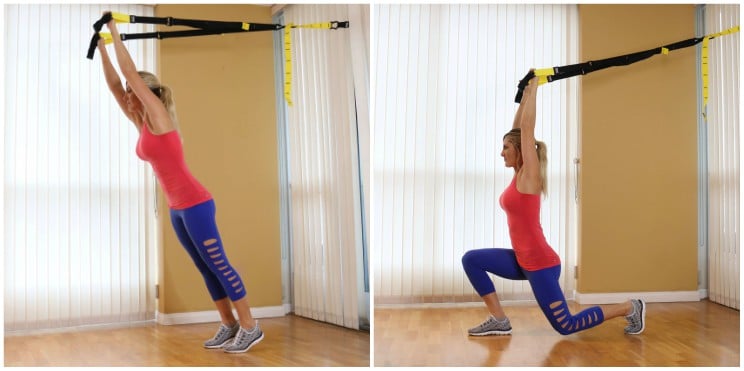
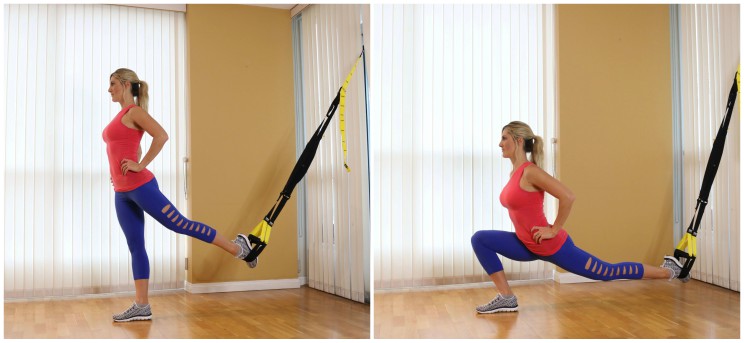
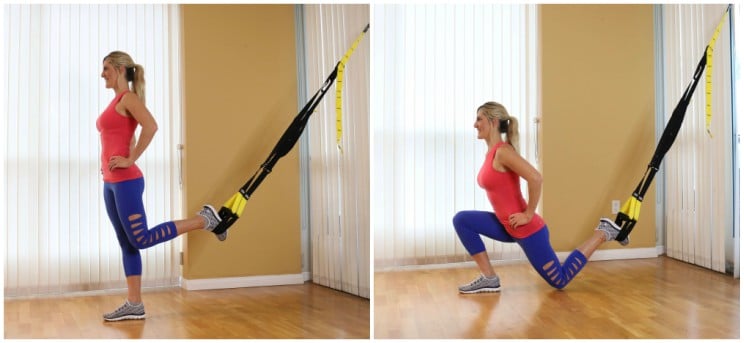


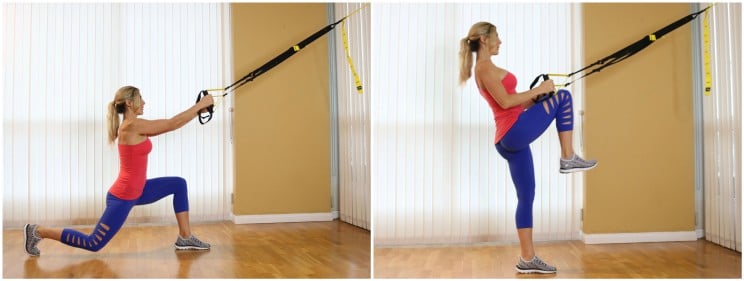
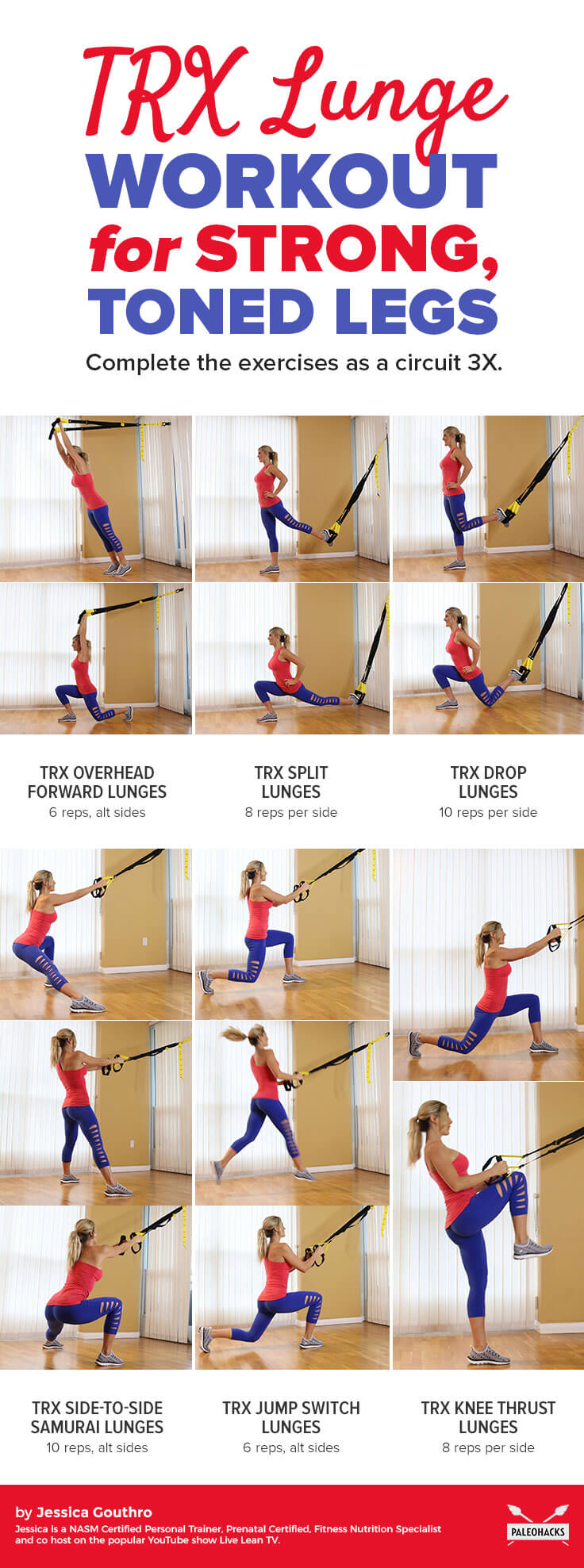
 Smoky Minestrone Soup Recipe
Smoky Minestrone Soup Recipe
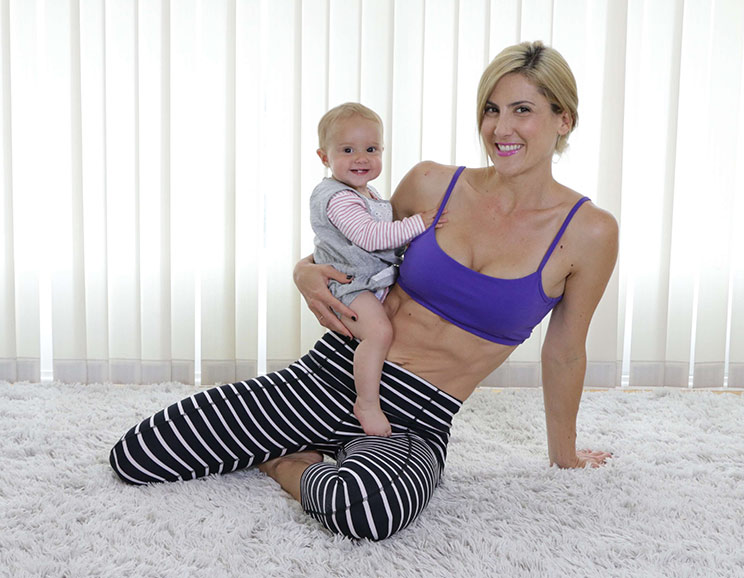
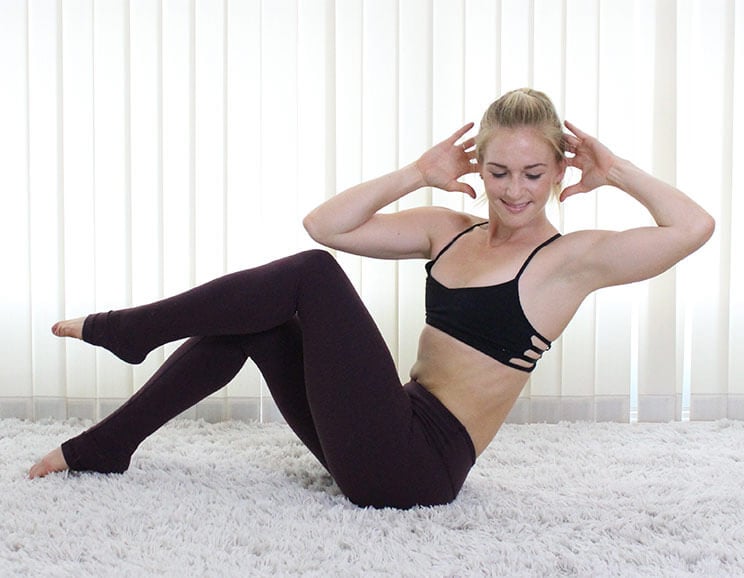
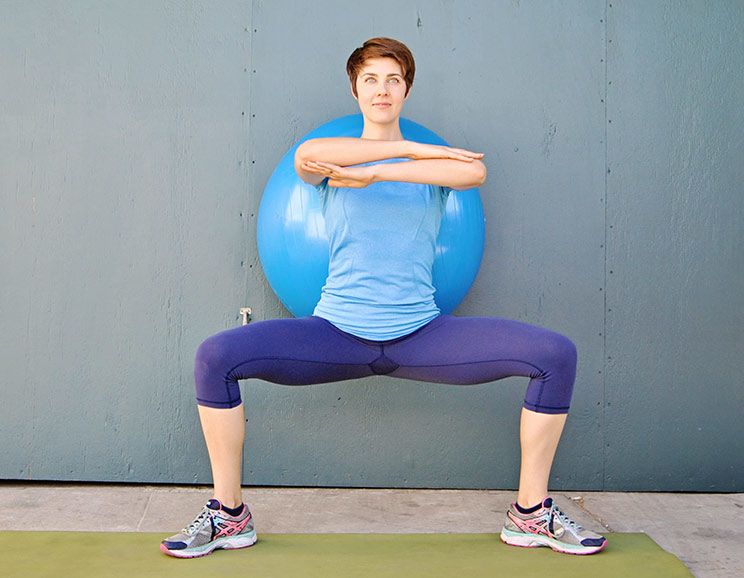

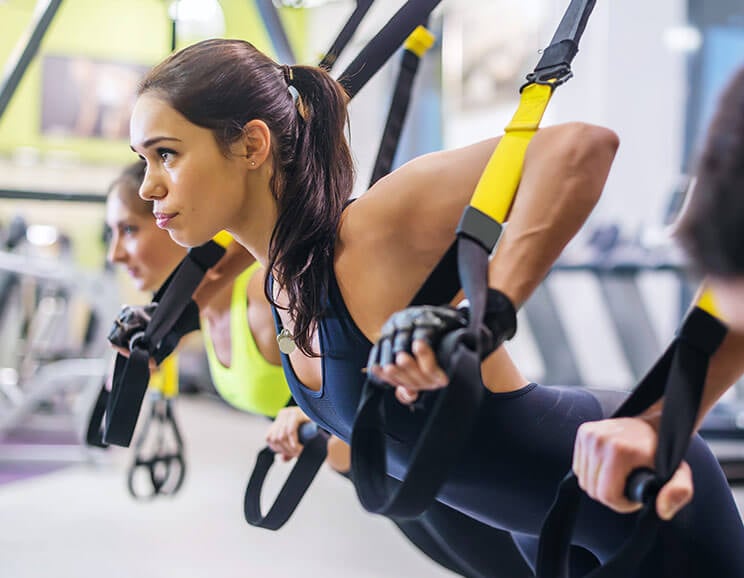
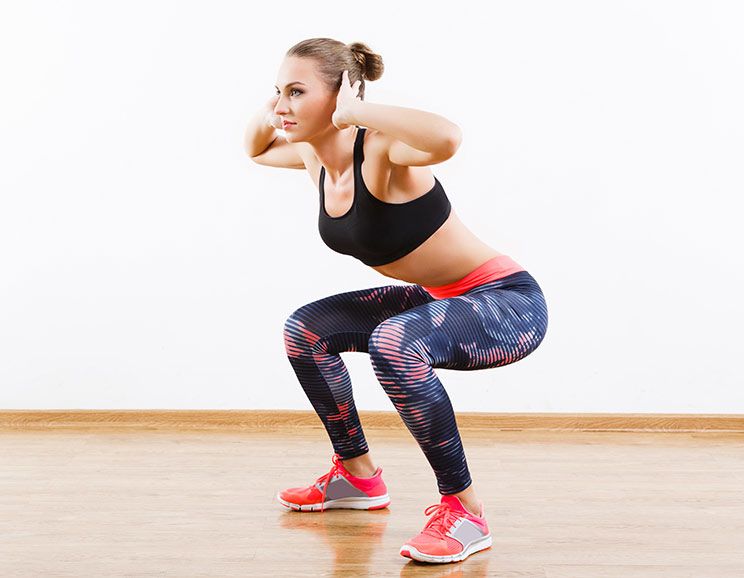
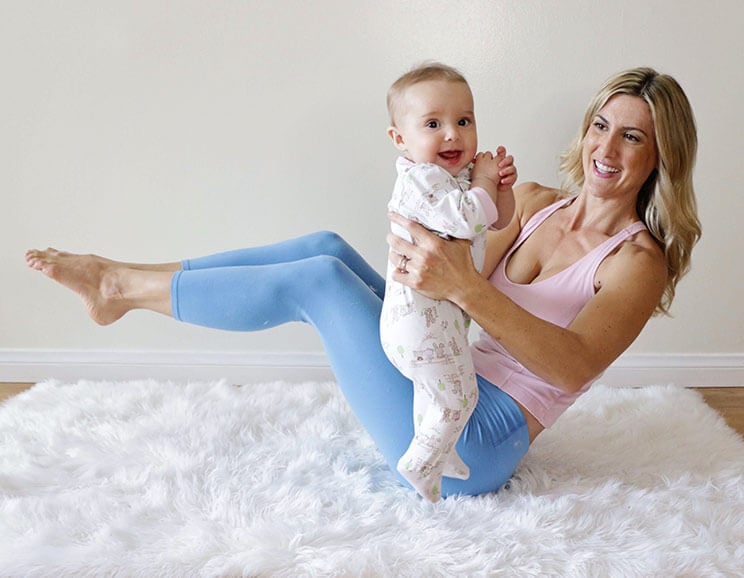
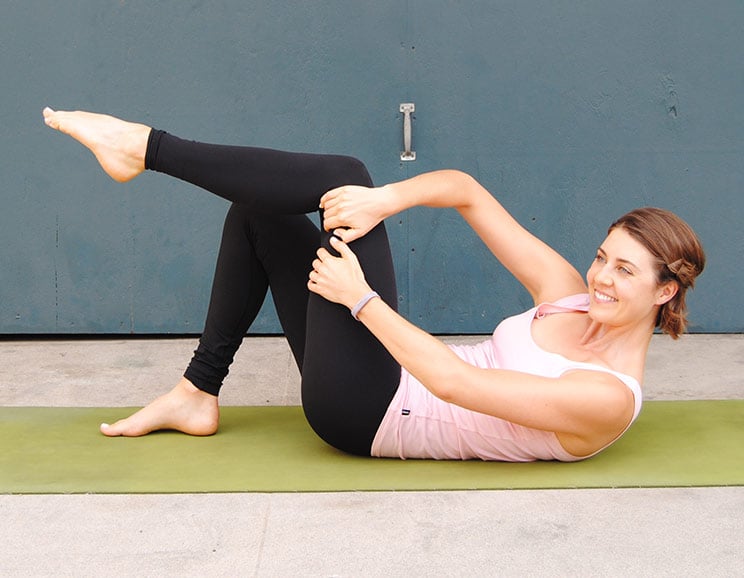
Show Comments